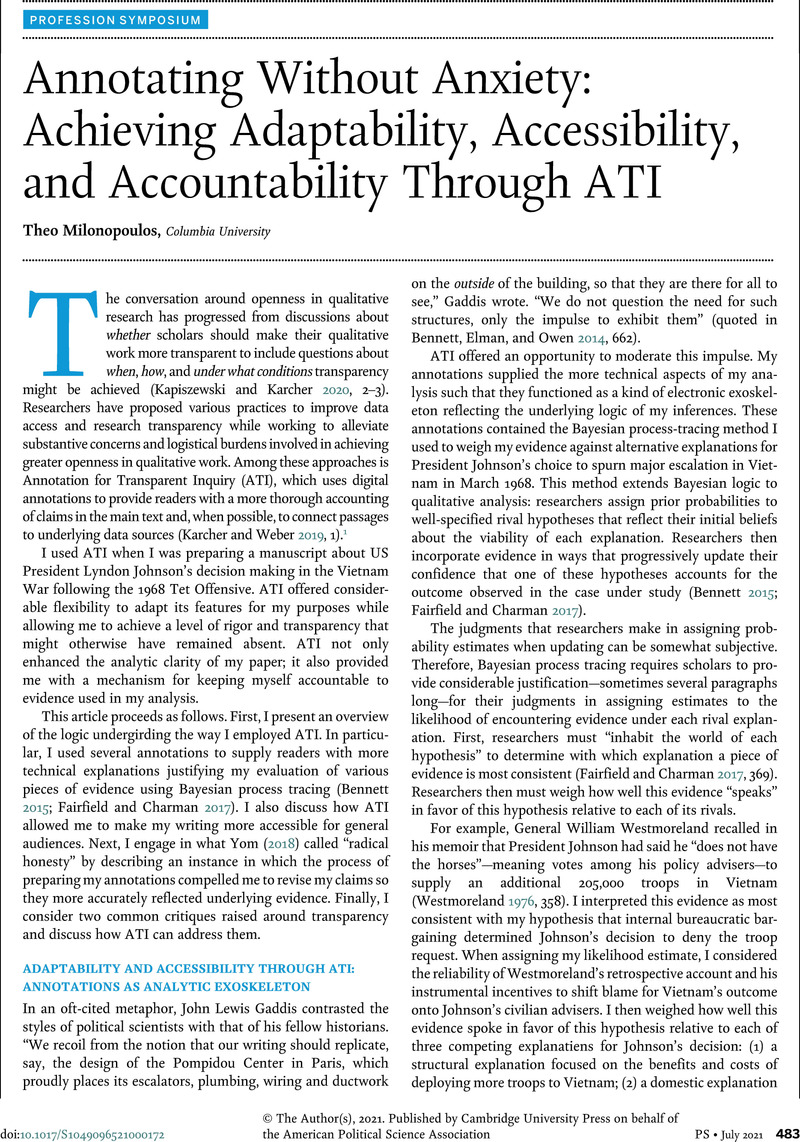Crossref Citations
This article has been cited by the following publications. This list is generated based on data provided by Crossref.
Mayka, Lindsay
2021.
Bridging Positivist and Interpretative Approaches through Annotation for Transparent Inquiry.
PS: Political Science & Politics,
Vol. 54,
Issue. 3,
p.
479.
Myrick, Rachel
2021.
Reflections on Using Annotation for Transparent Inquiry in Mixed-Methods Research.
PS: Political Science & Politics,
Vol. 54,
Issue. 3,
p.
492.
Gerring, John
2021.
Annotations to ATI.
PS: Political Science & Politics,
Vol. 54,
Issue. 3,
p.
496.





